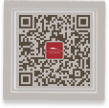- 中文
- EN
- Français
- 日本語
- 한국어
- 繁體中文
Exhibition of Revolutionary Cultural Relics launched by the Hunan Museum
To celebrate the centenary of the founding of the Communist Party of China, Hunan Museum has made full use of the collected red revolutionary cultural relics and launched a special exhibition—"Red Spirit Flourished in the Land of Heroes: Special Exhibition of Revolutionary Cultural Relics". This free exhibition will be held in No.1 Special Exhibition Hall on the first floor of the Hunan Museum until October 31st, 2021.

At 10:00 a.m., June 29th, representatives of Hunan Provincial Department of Culture and Tourism, Hunan Provincial Science and Technology Department, the Hunan Provincial Bureau of Cultural Heritage, board members of the Hunan Museum and friends from the media were invited to attend the opening ceremony. Zhang Xihui, member of the Party leading group and deputy director of Hunan Provincial Department of Culture and Tourism, delivered a speech at the opening ceremony; Duan Xiaoming, director of the Hunan Museum and curator of this special exhibition has made an introduction to the exhibition.


Hunan Province boasts its abundance of red revolutionary cultural resources, so much so that it seems to be a revolutionary history museum without walls. In September 2020, general secretary Xi Jinping inspected Hunan and praised the province, saying that "one can find revolutionary site in nearly every 10 steps", "soaked in the blood of the Red Army, the soil witnessed the revolutionary martyrs’ heroic sacrifice" The year of 2021 marks the 100th anniversary of the founding of the Communist Party of China. In regard to this grand event, The museum selects the representative revolutionary cultural relics of important Party figures in history during the new democratic revolution and incorporates their values into the new era. It is hoped that this special exhibition could educate, impress, and inspire more people by displaying the Hunan figures, stories and spirits related to red history.

There are a total of 300 pieces(sets) of well-selected revolutionary cultural relics for the exhibition, of which 80% are precious cultural relics and 70% are exhibited for the first time. The following are some of the highlights of this special exhibition. Firstly, it is objective and real. Based on the theme of “Red Spirit Flourished in the Land of Heroes”, this exhibition focuses on Hunan revolutionary figures in history and promotes the themes of the times and Hunan spirit by displaying cultural relics in an objective, truthful and accurate manner, aiming at showing the characters and morals of these flesh-and-blood people with lofty ideals. Secondly, cultural relics are storytellers. They are faithful witnesses of the history and represent in microcosm what has happened in the past. We dig into stories behind the cultural objects while being concentrated on the cultural connotation and the value of the times embodied in the cultural relics. Thirdly, the adoption of modern art. The special exhibition breaks through the traditional display mode of "picture- and text-based, supplemented by cultural relics" by borrowing ideas and settings of the direct and concise modern art. Fourthly, optimize narrative language. We soften the narrative language of the exhibition while keeping pace with the times. Vivid revolutionary stories take the place of the traditional catchword style of preaching and various forms of exhibition means are combined to create situational, experiential, and interactive participation modes for the audience, so as to enhance the appeal and impact of revolutionary cultural relics.


Themed at "Red Spirit Flourished in the Land of Heroes", the special exhibition follows the history of the revolution of the Communist Party of China in Hunan and showcases the revolutionary spirit and noble characters of people with lofty ideals in four units, "The Tide Riders Surf the Currents", "A Million Workers and Peasants Rise Up", "All Around Heroes Home-bound in the Evening Mist" and "Bitter Sacrifice Strengthens Bold Resolve".
The first unit mainly shows that how did Mao Zedong, Cai Hesen, Li Da, Deng Zhongxia, He Shuheng and other Hunan youths stand in the forefront of the tide of the times, foster a belief in Marxism, and participate in the founding of the Communist Party of China during the process of combining Marxism with the Chinese workers' movement.

The Hunan workers and peasants’ movement in the first period of Kuomintang-Communist cooperation is the topic of the second unit. Hunan is one of the birthplaces of the Chinese labor movement. With its early rise, strong momentum, bitter struggle, profound influence and stunning victory, Hunan workers' movement takes a distinctive position in the history of Chinese workers' movements. In the great revolution period of the cooperation between the Kuomintang and the Communist Party and as the northern expedition marched to victory, Hunan became the center of the national peasants’ movements. Tens of thousands of peasants in Hunan quickly gathered with the guides of peasant associations and determinedly struggled against the feudal landlord class, leading to a storming rural revolution.

In the third unit, the important Party history events in Hunan during the agrarian revolutionary war, the War of Resistance Against Japan and the liberation war are introduced. During the agrarian revolutionary war, well-known uprisings such as Autumn Harvest Uprising, southern Hunan uprising, Sangzhi uprising and Pingjiang uprising broke out in Hunan, and revolutionary bases such as “Jinggangshan” (Jinggang Mountains), “Xiang E Xi” (Western Hunan and Hubei), “Xiang Gan” (Hunan and Jiangxi), “Xiang E Gan” (Hunan, Hubei, and Jiangxi), “Xiang E Chuan Qian” (Hunan, Hubei, Sichuan, and Guizhou) were established. During the War of Resistance Against Japan, Hunan was an important center stage battlefield. Though the Kuomintang and the Communist Party cooperated with each other, the battle in Hunan was extremely arduous, and the South detachment of the Eighth Route Army moved to fight in Hunan at that time. During the liberation war and after the peaceful liberation of Peking, the peaceful liberation of Hunan presented the "Changsha Way of Liberation", which saved Hunan people from scourges brought by war.

Hunan's distinguished heroes in the new democratic revolution are displayed in the fourth unit. The victory of the Chinese revolution was filled with the blood and life of the people. The letters to family and relics of 14 famous heroes, including Yang Kaihui, Xun huaizhou, Zuo Quan, Mao Zemin, Cai Shengxi, Chen Yian, Guo Liang, Liu Zhixun, He Erkang, Luo Xuezan, Tan Shaofu, Xiong Henghan, Liu Houfu and Huang Hengming, are mute yet credible witnesses of numerous touching stories.



